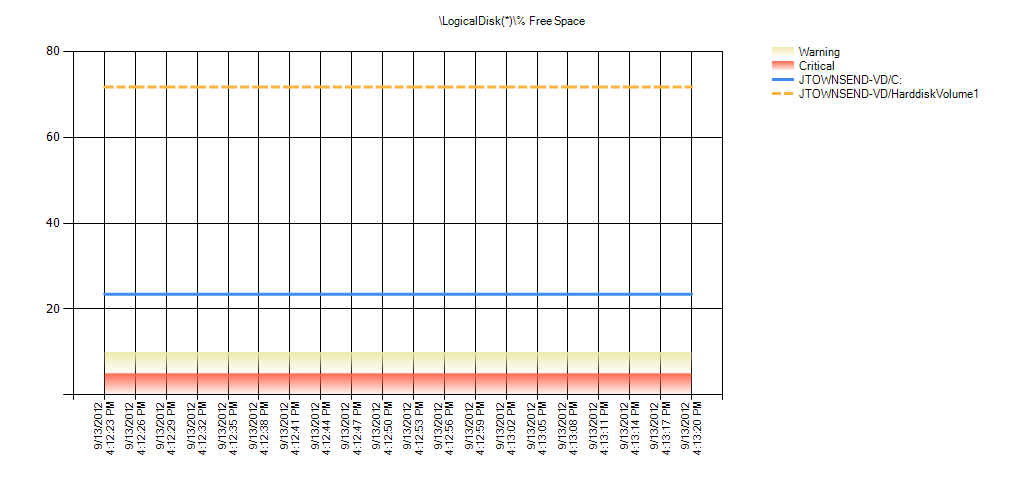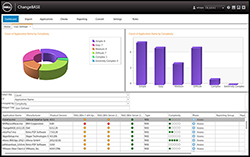

- #Vm has more disk space than reported by netapp install#
- #Vm has more disk space than reported by netapp upgrade#
- #Vm has more disk space than reported by netapp software#
With SAN protocols, they can only be easily grown, not shrunk. Thin provisioning, deduplication, and cloning return savings immediately, making capacity management easier.įurthermore, volumes can be easily shrunk or grown. However, if you’re using VVols, you still do get it with SAN.Īlso, provisioning can be easier on an NFS NIC than an HBA because it’s easier to configure and less likely to require firmware management. You don’t get that with traditional SAN datastores. One of the benefits of using NFS is that ONTAP is aware of VMDK files when you use NFS. But if you read the technical report, you’ll see that it gently nudges you towards using NFS. The official line from NetApp is that you can use any protocol you want to, and it doesn’t affect performance. It will be easier to use the existing Ethernet network and NFS if that’s what you were using already.

#Vm has more disk space than reported by netapp upgrade#
If you were going to use a fiber channel instead, you’d have to upgrade the hardware in your network, and you’d also have to train your staff in it. If you are using maybe NAS protocols for your home folders, etc., you’re probably going to use NAS and then roll out VMware. What are you using for any existing storage already? Is that going over IP or fiber channel, for example, and the cost of any upgrades. NetApp testing has shown little performance difference between the different protocols.Ĭonsiderations for which protocol you’ll use are the current storage infrastructure and staff skills. You can use NFS or any SAN protocol with VMFS for your vSphere datastores for your storage protocol choice. Those are things that you don’t get with traditional datastores, so you should look at implementing VVols in your environment. They provide enhanced features, such as VMware-managed NetApp snapshot copies, and support Adaptive QoS. Should you use traditional datastores or VVols? There’s slow uptake of VVols, but VVols provide virtual disk granular storage. Lastly, register OnCommand API Services with the VASA provider if using VVols to see the VVol dashboard and reports. Also, enable the VASA provider, which is enabled by default in the latest version of VSC.
#Vm has more disk space than reported by netapp install#
Install the Guest OS scripts on your virtual machine guests or VMware tools. Moreover, install the NFS VAAI plug-in on ESXi hosts if you use NFS for your datastores. The version of vSphere you’re running, the version of ESXi running on your host, and the version of ONTAP running on your storage should all be compatible.
#Vm has more disk space than reported by netapp software#
Use the NetApp Interoperability Matrix to confirm compatibility between software versions. Also, if you’re using VVols, you need to use VSC for the VVol datastore provisioning. So you’ll know about it, and you can set them back. If somebody somehow changes those settings by accident, it will alert you. It also allows you to push best practice settings to your ESXi host, and it monitors that those settings are still configured. Because of this, there will be fewer mistakes, requiring less troubleshooting. It also supports policy-based management and standard procedures. It is a NetApp plug-in that plugs into VMware vSphere, and it allows you to manage your ONTAP storage for vSphere from the vSphere client. In general, these are the settings you’re going to want to use.įirst, Virtual Storage Console (VSC) is used to manage vSphere with ONTAP since it provides a single integrated admin interface. It includes general best practices, and other configurations may be more suitable for your environment depending on your particular workloads. That’s VMware vSphere with ONTAP, and most of the best practices that I will be talking about come directly from that technical report. Best practices are covered in the NetApp Technical Report TR-4597.


 0 kommentar(er)
0 kommentar(er)
